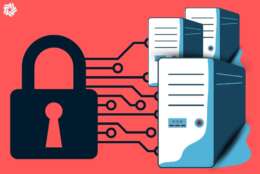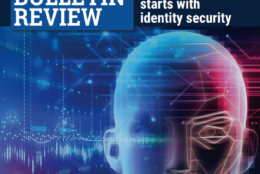Cybersecurity
-
The National Finance Center just implemented a multifactor authentication system for agencies to access employee payroll data, and more cybersecurity updates are still ahead.
November 09, 2022 -
As federal agencies work to meet the milestones laid out in memorandum 22-09 in support of President Joe Biden’s Executive Order on Improving the Nation’s Cybersecurity, implementing a strong identity and access management solution is a practical first step with a large impact in improving an organization's security.
November 08, 2022 -
The Cybersecurity and Infrastructure Security Agency’s continuous diagnostics and mitigation (CDM) program is planning to expand the capabilities of the agency and federal dashboards in 2023.
November 07, 2022 -
Discussions on cybersecurity mostly revolve around protecting digital infrastructure and various software systems. Physical infrastructure and its security is often overlooked. But the physical security of buildings that host the digital infrastructure and people are equally important.
November 07, 2022 -
The Army says SBOMs are "going to happen" and is now asking for feedback on how to use them as part of the acquisition process.
October 31, 2022 -
Jason Workmaster, a member at Miller & Chevalier, joins host Roger Waldron on this week's Off the Shelf for a discussion of then current legal and policy issues in government contracting.
October 31, 2022 -
The Defense Department's Cyber Crime Center, known as DC3, has a new executive director, Jude Sunderbruch. He joined the Federal Drive with what's new at the DC3 and what he plans for this crucial office.
October 28, 2022 -
Although there’s some disagreement over when agencies will actually start benefitting from them, many agencies are currently laying the foundation to start using SBOMs.
October 28, 2022 -
Energy Department CIO Ann Dunkin puts cyber defense at the center of her efforts.
October 27, 2022 -
With an AI-based, GPU-driven solution, organizations and governments will be able to collaborate while being armed with a proactive approach to defend from future attacks and protect America’s most sensitive data.
October 27, 2022 -
The goals are voluntary, but the Biden administration is separately pressing certain critical infrastructure sectors to adopt minimum cyber standards.
October 27, 2022 -
In this exclusive ebook, we take a deep dive into efforts at the Army Software Factory, CISA and DISA to share strategies and insights — particularly at a time that agencies simultaneously want to deliver more data and services to users at the edge.
October 26, 2022 -
Last month, the European Commission drafted a law called the Cyber Resilience Act. It's an extensive framework aimed at improving cybersecurity in the EU.
October 25, 2022 -
The minimum security configurations should help agencies better secure widely used business applications.
October 24, 2022 -
One way federal agencies can keep their systems current is to use digital twins for security modeling. Let’s look at this practice and why it’s gaining popularity as the preferred way to patch mission-critical systems and maintain software integrity.
October 24, 2022












